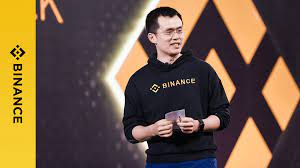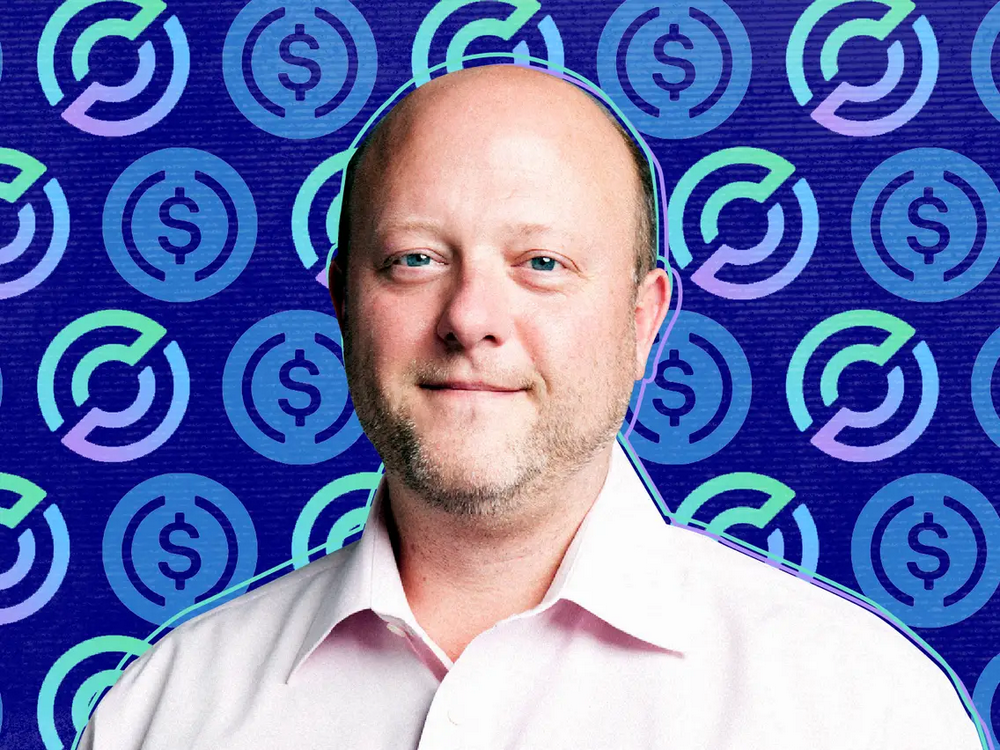How should the Blockchain Foundation and DAO be designed? Learn from Centennial Experience of the American Foundation
Written by: Li Hua
Source: Chain News
Original work: The Responsibility of Wealth and the Evolution of Capitalism by Zi Zhongyu
There are many public goods in our lives, such as parks, such as roads. They have two basic characteristics: one is non-competitive, which means that when one person consumes the item, it will not reduce the benefits of this item to others; Right and wrong exclusivity means that when one person pays to consume the item, other people who do not pay cannot consume the item.
- Market analysis: After the dive, the more critical for BTC is this resistance line
- Why South Korea's top crypto exchanges delisted cryptocurrencies on a large scale
- "Year Spring Red Packet Rain"-Barkis Network Public Chain (BKS) Million Red Packets Coming Soon
Many items on the blockchain, it can be said that most items at this stage have the nature of public goods. For example, a zero-knowledge proof application, such as the design of a second-order voting model, once they are provided, they can be used non-competitively and non-exclusively.
Although after the public goods are put into use, the marginal cost required for each additional user is close to zero, but the production of public goods requires costs, and the provision of public goods is a problem. In daily life, this problem is usually solved by the government. However, for a blockchain without a similar organizational structure, how to complete the supply of public goods?
Foundations and DAOs that provide foundation functions are the methods we are currently exploring, but how do we raise funds for foundations or DAOs? How should these funds be managed and used? Are these funds provided in the form of donations or investments? There is a lot to explore, and what we may learn from traditional foundations to help thinking-after all, it is a successful business with a century of history and a contribution that cannot be ignored for the development of human society.
This article is based on Zi Zhongyi's book "Responsibility of Wealth and the Evolution of Capitalism". With the help of the book's research on the rise, development, evolution, and role of American foundations, this article finds some clues for the blockchain foundation. And DAO design and operation.
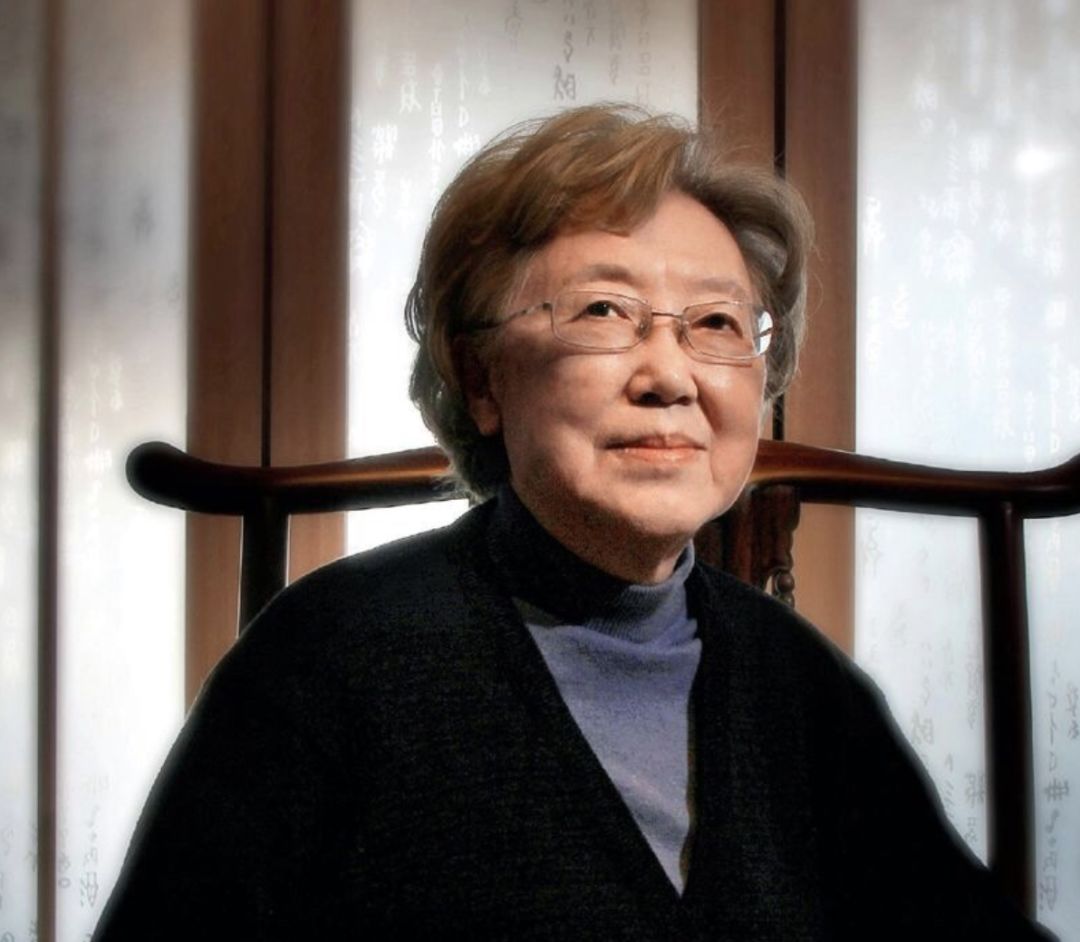
Zi Zhongyi, former director of the American Institute of the Chinese Academy of Social Sciences
Mission of the Foundation: From Church to Modern Foundation
Important American cultural projects, large and small, are not directly or indirectly related to the foundation's philosophical ideas or influence. The foundation's role in the development of the United States in the 20th century is inestimable. It is an important part of the progressive improvement of the United States.
The western tradition of helping the poor is mainly derived from the Bible. Since the birth of the organized church, the church has become the host and intermediary of charity. Donors don't donate directly to the people they help, but they give the property to the church for distribution. In this way, philanthropy is not only an individual's good deeds, but also a complex property relationship.
In 1601, the UK adopted the Elizabeth Law, which began the secularization of charity, the socialization of aid recipients, and the establishment of effective management and supervision mechanisms. It can be regarded as the forerunner of modern public welfare. In the mid-17th century, this new kind of philanthropy spread to the New World with the early colonists. It can be said that the philanthropy of the United States developed in parallel with colonial development.
Franklin is a true pioneer of public welfare in the United States. The public welfares he founded or assisted directly include: the first public library, voluntary fire brigade, paving roads, clearing roads, building street lights, and police patrols in Philadelphia. He explored A principle of "volunteer" serving the society and a way to put it into practice that fits the American psychology have emerged. The career and activity model he organized also became the source of public welfare later.

Benjamin Franklin, American polymath and founding father
There have always been two tendencies in public welfare. One is "giving people fish," that is, simple relief to the poor, and the other is "giving people fish," that is, helping people to be self-reliant. Franklin is the latter. He emphasized that the good way is not to make the poor comfortable in poverty, but to guide them out of poverty. By the end of the Civil War, the latter tendency had gradually gained the upper hand, forming the saying of "scientific public welfare", and this was the foundation of the development of modern foundations.
Among the foundations established during this period are particularly worthy of mentioning the Peabody Education Foundation and the Slater Fund, which created the modern big foundation model, which has turned relatively scattered donations into rational, organized, and professional public welfare The cause of exploring the roots of social problems and assisting disadvantaged groups is more based on science and rationality than on appealing to benevolence and altruism.
With the advent of the 20th century, a number of well-organized and modernized funds have emerged. The three leading funds are Sage, Carnegie, and Rockefeller. They have hired courageous and well-managed consultants to plan for the foundation how best to benefit society with its wealth. The management of the foundation is formal. It has a board of directors elected by itself, as well as offices and persons in charge as needed. The board of directors can adjust the foundation's work program and donation focus at any time as circumstances change.
These foundations have created so many businesses that they have become a social force, and together with other non-profit organizations have become an independent social department.
For blockchain
The foundation and DAO on the blockchain are exactly such modern foundations. Its purpose is not to directly donate to someone to make someone better off. It is to provide funds for those who produce public goods, so that the entire " "Society" has better infrastructure (municipal construction).
Among the three major foundations, Sage, Carnegie, and Rockefeller, the foundation on the blockchain is the most similar to the Sage Foundation with the purpose of "improving social conditions in the long run". The latter's work to achieve the goals is mainly This includes surveys, research, education, publishing, and advocacy for collaboration and building the necessary institutions.
How foundations raise and fund: the bridge role of community foundations
According to the classification of the Foundation Yearbook, there are four main types of foundations: the first type is independent foundations, most of which are funded by individuals or families, and the operation method is to donate to various institutions' projects; the second type is Corporate foundations differ in that their sources of funding are for-profit businesses. The third type of community foundation and the fourth type of operational foundation are more similar to the foundations on the blockchain, so they will be highlighted.
Community foundations are set up by residents of a region to solve problems in the region and play a very important role in American life. Its funding sources are diverse. It may be founded by the wealthy individuals, or it may be funded by many residents. In some places, a large foundation is used as a seed to drive many small community foundations.
The main responsibility of the foundation is to investigate and discover the needs of the region, to act as a bridge between the supply and demand side of funds, and to manage and use funds on its behalf. In the 1970s, the four main goals of the Mert Foundation became the common work of community foundations:
- Establish a system of regular and unlimited contributions.
- Respond to emerging and frequently changing community needs.
- Provide channels and services for donors with different interests.
- Act as resource providers, brokers and catalysts in the community.
Let's take the Cleveland Community Foundation as an example to further introduce. The founder of the foundation is Frederick Goff (he is known as the father of the community foundation). He is a law student, a former legal adviser to the old Rockefeller, and has a lot of research on Sage and other foundations. After absorbing the experience of many large foundations, he pioneered the institutional model of community foundations.
Gove proposed two specific goals from the beginning: First, there should be regular donations in fundraising, rather than annual fundraising activities; and second, a representative organization should be established to spend money. . Next, the Foundation established a distribution committee consisting of five people, two elected by the Cleveland Trust Company, and the remaining three elected by the Cleveland Mayor, the District Court senior judge, and the probate judge at the foundation's location.
After completing the legal and organizational procedures, Goff immediately embarked on a series of large-scale investigations involving public schools, entertainment, criminal justice, etc., he hired high-level experts to carry out this work, the purpose of the investigation was to make the public understand the status quo This led to their request to change some of the status quo. Through this survey, community foundations have become attractive to donors and established prestige throughout the community, which is to make both sides believe that community foundations can improve the conditions of their communities in the right way.
The objects and work of the foundation include:
- Encourage research and propose solutions to community social issues.
- Develop priorities for action on these programmes.
- Fund research, exploration, experimentation, and other projects to address these issues.
- Provide professional staff to credit unions and foundations that lack professional support and operate under difficult conditions.
In order to avoid investing money into the bottomless pit and to avoid the dependence of donated objects, the foundation has adopted the following methods:
- Give some groups seed funds, and then assist them in various ways for long-term planning and management.
- Entrepreneurs are invited to serve as a team of consultants to teach their managers the way of doing business. At the same time, they should make entrepreneurs aware of the work of the team and appreciate their importance to the region, so as to provide generous relief.
- Promote "Challenge Donations". When applying for funding, the relevant team promises to raise a corresponding amount of money.
A successful example of this series of initiatives is that the Cleveland Foundation has raised development funds and venue construction funds for art groups in the region, which has greatly promoted the development of the local art cause and made Cleveland brilliant in art.

Cleveland Foundation facilitates completion of Cleveland Theatre Plaza Center
American community foundations have a considerable influence on the development of local economy, society and culture. In some people's minds, community foundations are equivalent to private legislatures. They can determine the work priorities and schedules of their communities and serve as local government agencies. Impossible.
For blockchain
Whether the Ethereum Foundation, the Moloch DAO or Gitcoin Grants, their goals are similar to community foundations, and they are all aimed at improving community conditions and providing funding for programs or projects that solve community problems. In terms of sources of funds, they all rely on the community or community members themselves, rather than on a private philanthropist.
We may be able to apply some of the successful organization methods and working methods of community foundations to the construction of blockchain foundations or the design of DAO models. In fact, Gitcoin Grants' matching donations and community foundation's challenge donations already have a lot in common. In addition, is it possible for a community foundation of an official nature to obtain funds for public goods (like government agencies) through tax collection? Zcash's miner tax seems to be an attempt on this path.
Operational foundations are the fourth type of foundation. The source of funding is mostly a single private or family. The difference is that they mainly do their own projects instead of donating to others. It is somewhat like a non-profit research institution.
This type of foundation is represented by the Charles Kettering Foundation, founded by Kettering. Kettering is an inventor in history. His invention seems to be ordinary, but it can solve key problems and greatly increase productivity. Its inventions include: auto starters, the use of Freon, safety glass, the earliest comprehensive fuel for aircraft … Kettering not only has his own talent for invention, but also believes that new ideas can be generated through collective cooperation.
The Kettering Foundation is fully focused on scientific research in the early stage. It consists of several laboratories. Each laboratory proposes a work plan and budget to Kettering each year. Kettering allocates it from his own assets after approval. The charter and operations of the Charles Kettering Foundation were closer to the Institute, until Kettering died entirely under his leadership.
For blockchain
In the early days, the "official" foundation on the blockchain seemed to have the shadow of an operational foundation. For example, the Ethereum Foundation changed the resource allocation method from the "wage system" to the "project system". When a blockchain project, especially a large community-based project, is in its infancy, is the "official" operational foundation a more efficient way?
In addition, is there a way to combine community foundations with operational foundations? In other words, do you rely on the community instead of the individual to raise funds, and run your own project instead of funding others? This new form of foundation seems to need to win more trust from the community, not only in the use of funds, but also in the ability to execute projects.
Donating in the form of investment: the new trend of venture capital public welfare
In the past decade or so, a new type of public welfare undertaking has emerged rapidly and has developed into a strong international trend. In a nutshell, this is a public welfare model with a mix of for-profit and non-profit with the goal of pursuing influence and efficiency. Its core content is: Doing public welfare based on the market model, making public welfare not only a free donation, but also a profitable cause.
This public welfare model may be instructive for the design of DAOs on the blockchain.
The new public welfare model has the following three characteristics:
- It is no longer limited to non-profits, but it can also be expanded through profit-making businesses. There is always a time when pure unpaid donations are exhausted, but the reality is that there are huge assets waiting to be developed between the government, private enterprises and the non-profit sector. The new public good combines supply and demand, capital markets and government rules, so that private enterprises and public welfare are no longer the opposite parties. On the one hand, the bottom line for measuring success or failure is not profit but social value; on the other hand, people who successfully solve social problems are not simply victims of altruism, but will get their due returns.
- Proactively investigate the needs of society and target. New Public Welfare finds suitable organizations to provide funding based on social needs and operates in a market model. These organizations include both non-profit NGOs and profitable social enterprises.
- Multi-party cooperation to form a comprehensive systems project, focusing on results. The partners of NPG include sponsors (and possibly initial funders), funders, experts and research units, media and communities, etc. They form a network of contacts. The funder sees the project as an investment and gives it to those who are willing and able to implement it.
The coverage of New Public Welfare is relatively broad. Its spectrum ranges from completely focusing on social services and excluding economic benefits; taking both into account; and taking profit as the main goal and taking into account social benefits. Generally speaking, the new public welfare can be divided into the following three categories:
Venture capital
Venture capital is also known as venture capital, and it contains several determinants: accurate financial design, high accountability, continuous tracking of investment objects for many years, helping its organization and capacity building, and performance evaluation. These factors can make venture capital public welfare different from traditional public welfare donation because the latter generally only cares about the project of the funded object, and does not care about its ability to complete the project.
In addition, traditional donations often only cover a part of the short-term funds required for the project. As a result, the funded party has to spend a lot of time and energy on annual fundraising, rather than on governance and business. May lead to brain drain. However, venture capital philanthropy absorbs the advantages of venture capital and can avoid these disadvantages.
Another difference in venture capital philanthropy is that it has an exit mechanism. After a period of time, if the funded person achieves the expected results, or finds a replacement funder, the initial investor can withdraw.
Social Enterprise
The operating mode of a social enterprise is the same as that of a general enterprise, except that profit is not its ultimate goal. It must engage in causes that are beneficial to society. Part of the source of funds is donations and part of operating profits. The goal is to gradually realize their own blood production. The superiority of a social enterprise is that it is sustainable and scalable compared with endowment funds. Compared with ordinary enterprises, it is less subject to the pressure of shareholders to pay attention to profits. To measure the strength of a social enterprise is to put social benefits in First place.
Impact investment
The term "investment in influence" is derived from a 2007 conference convened by the Rockefeller Foundation at the Bellagio Center. The theme of the conference was: Where can capital be invested to benefit society and the environment most effectively. Impact investment in the new public welfare spectrum is closer to the end of the emphasis on market benefits, it has more distinctive commercial profitability, and more emphasis on the pursuit of scale effects.
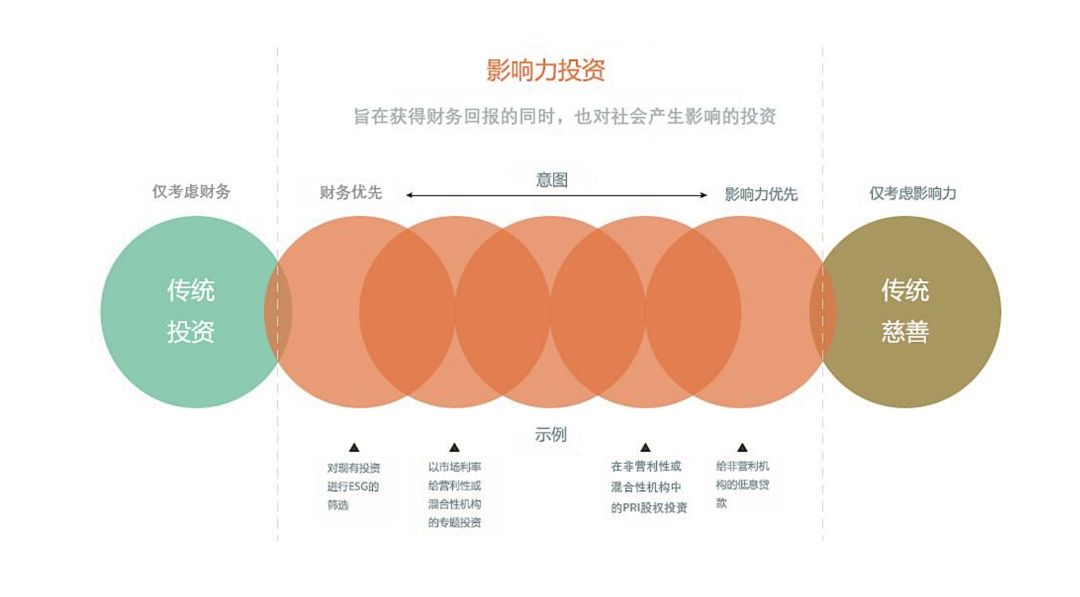
Impact investing is between traditional investment and traditional charity. Source: Rockefeller Charity Consulting
Impact investment introduces a large amount of private capital to the poorest, not only to fill the gaps where services are completely absent, but also to eliminate monopolistic suppliers with high quality and low prices through market competition. Its beneficiaries are not only passive recipients, but also expected to gradually become investors.
In a sense, venture capital philanthropy, social enterprise, and impact investment can also be classified as venture capital philanthropy. The former is the theme, and the latter two and other forms of new public welfare are variations.
Some operating methods of venture capital public welfare
The Gates Foundation, Rockefeller Foundation, JP Morgan, and Citibank are leaders in new types of public welfare. In this part of the article, we will introduce some representative new public welfare organizations and see how they can be used for reference. .
DRK Foundation
DRK has three criteria for project selection: the ability of the founder, the scalability of the project model, and the potential world influence of the organization. Once the funding target is confirmed, there is no limit to the amount and duration of the fund. The foundation will send people to join the project's leading organization as an entrepreneurial partner, and deeply participate in its organizational construction and large-scale work.
Ashoka Social Innovator
Ashoka's social innovators have developed a selection mechanism: First, a group of shortlisted candidates were screened in the national social entrepreneur database through background checks; subsequently, the headquarters sent people to the finalist's residential area for a carpet-like visit. Any possible stakeholders around the candidate; in the end, the candidate was "tortured" again by the consultant. Ashoka has a 17-person decision-making team that uses a one-vote veto on the choice of funding.
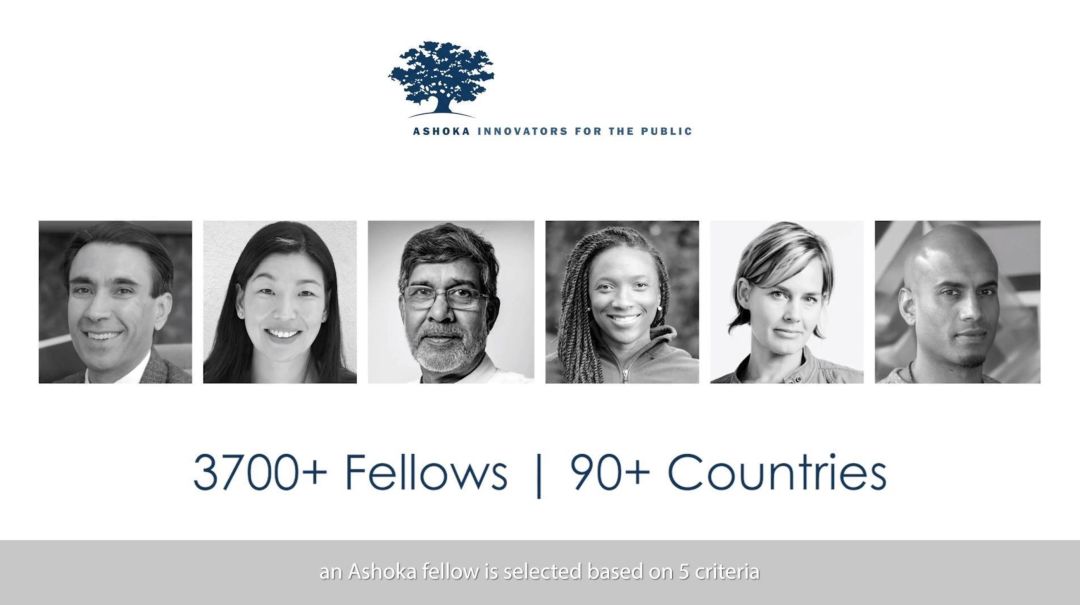
Ashoka Social Innovator
Social Venture Partners
The Social Venture Partners (SVP) is a joint venture venture charity, and Fortune magazine calls it a pioneer in venture capital. In order to find and support effective public welfare supporters, SVP explored a path: Cultivate citizen philanthropists through self-learning, self-education, democratic self-government, make their volunteers to build partnerships with public welfare organizations, and use them Own professional skills to deeply participate and help improve the capabilities of these non-profit organizations. This model of bringing together nonprofits is very efficient through division of labor and collaboration.
Impact Workshop
The Impact Workshop (Hub) model started in the UK. Jonathan Robinson was the founder of the first Hub. He envisages opening a venue for social entrepreneurs who want to combine doing business and doing good. Explore, inspire, and cooperate with each other to build a network where capital and the experience of others can be gained.
Hub values cooperation rather than transactions. It combines the spirit of social movement, business logic, and cooperative ownership of social networks to create a decentralized organization and promotes the maximization of organizational capabilities of member institutions. Each Hub is not only Responsible to the center and to all Hubs.
Bill and Melinda Gates Foundation
In 2012, Bill Gates put forward the concept of "catalytic charity" at the dinner of Forbes 400 American Charity Summit. In his speech, he said: The commercial sector has been very successful in meeting the needs of paying, but Areas with low risk-return ratios are often overlooked, and these areas are full of huge opportunities for innovation. Catalytic philanthropy is similar to high-risk investment in the private market. The benefits of investment will benefit the poor, patients, and even society as a whole.
In catalytic philanthropy, donation or investment acts like an enzyme in a chemical reaction and acts as a catalyst.

Bill & Melinda Gates at Forbes 400 American Charity Summit 2012
The new commonweal in the United States, combining for-profit and non-profit, aims to direct capital to socially beneficial causes from the beginning. It does not necessarily represent altruism, but a vision of examining the situation. It breeds a capital-conscious way of innovation.
For blockchain
Although public goods are generally provided by the government, some economists including Zhang Wuchang believe that public goods can also be provided by private individuals and charge consumers. In fact, this method has a combination with venture capital public welfare, and provides profitable public goods in the form of a profitable foundation.
This seems to be a particularly suitable path for a blockchain community that does not have a government organization and whose members are mostly entrepreneurs or investors: it is in line with investors' minds and enables entrepreneurs to implement public goods and infrastructure. Sustainable, results-oriented research and production. Among the roads of relying on tax collection, community awareness, personal charity, and investment, venture capital based on investment may be the most worthwhile for the blockchain foundation or DAO to learn.
The foundation can do more
Obama had a speech explaining the idea of cooperation between the government and the civilian division of labor. He believes: If you expect the US government to solve everything, you will be disappointed. Because in the end, the best solution is not from top to bottom from Washington, but from everyone in the community from bottom to top. Obama applied to Congress for $ 50 million as seed money for the Social Innovation Fund, which is used to accomplish a range of things the government can't do.
The job of the Social Innovation Fund is to collect data, conduct rigorous assessments, find the most promising non-profit organizations in the United States to invest, and use them to obtain the best returns to taxpayers. In terms of operation, it will require the funded non-profit organizations to raise matching funds from other investment sources. From a certain perspective, the social innovation fund is similar to venture capital public welfare, but the source of its funds is every taxpayer, and the return on investment is also given to every taxpayer.
The government serves the society in the form of a foundation, proving the energy contained in the foundation, which may bring more confidence to the blockchain: the provision of public goods on the blockchain is a matter that is related to the future of the community and has not yet been well resolved Major issues, but if the foundation and DAO continue to explore, iterate, and develop, they may eventually be able to solve this problem, because at least in the real world, the foundation's method has proven effective.
For each "resident" in the community, participating in a foundation or DAO through donations or investments is one aspect, and paying attention to them and urging them may be another aspect that is more important.
We will continue to update Blocking; if you have any questions or suggestions, please contact us!
Was this article helpful?
93 out of 132 found this helpful
Related articles
- Oil price avalanche! Bitcoin plunges $ 800, or will the black swan continue?
- Bitcoin suffers from the "siege of siege", and there are several incidents outside the collapse of the international market that are preventing Bitcoin from return
- Platform currency war: the secret behind the value of OKB, HT, etc. |
- Slump ignites panic, BTC will test $ 8,000 intensity
- Viewpoint 丨 Can the value of Bitcoin cover the environmental costs of mining?
- Ethereum Blockchain Application: Are Enterprises Moving from Private Networks to Public Networks?
- Bitcoin plummeted early in the morning, where is the data for the outsole?


